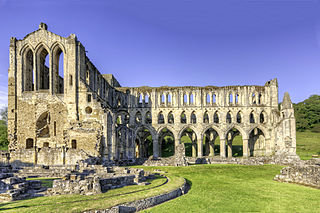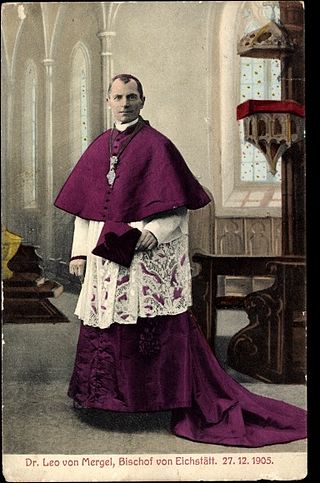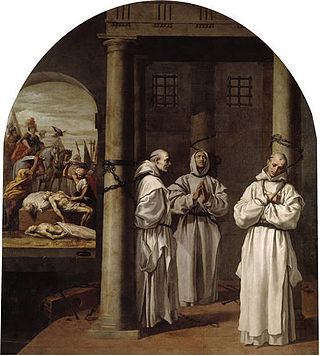Related Research Articles

The Rule of Saint Benedict is a book of precepts written in Latin c. 530 by St. Benedict of Nursia for monks living communally under the authority of an abbot.

The Carthusians, also known as the Order of Carthusians, are a Latin enclosed religious order of the Catholic Church. The order was founded by Bruno of Cologne in 1084 and includes both monks and nuns. The order has its own rule, called the Statutes, and their life combines both eremitical and cenobitic monasticism. The motto of the Carthusians is Stat crux dum volvitur orbis, Latin for 'The Cross is steady while the world turns'. The Carthusians retain a unique form of liturgy known as the Carthusian Rite.

Worcester Cathedral, formally the Cathedral Church of Christ and Blessed Mary the Virgin, is a Church of England cathedral in Worcester, England. The cathedral is the seat of the bishop of Worcester and is the mother church of the diocese of Worcester; it is administered by its dean and chapter. The cathedral is a grade I listed building and part of a scheduled monument.

Buckfast Abbey forms part of an active Benedictine monastery at Buckfast, near Buckfastleigh, Devon, England. Buckfast first became home to an abbey in 1018. The first Benedictine abbey was followed by a Savignac, later Cistercian, abbey constructed on the site of the current abbey in 1134. The monastery was largely demolished after its dissolution in 1539. In 1882 the site was purchased by French Benedictines who refounded a monastery on the site. New monastic buildings incorporated the remaining Gothic house. Buckfast was formally reinstated as an abbey in 1902. Work on a new abbey church, which was constructed mostly on the footprint of the former Cistercian abbey, started in 1907. The church was completed in 1938. As of 2020, the abbey has 13 monks.

Trinity College is one of the constituent colleges of the University of Oxford in England. The college was founded in 1555 by Sir Thomas Pope, on land previously occupied by Durham College, home to Benedictine monks from Durham Cathedral.

Rievaulx Abbey was a Cistercian abbey in Rievaulx, near Helmsley, in the North York Moors National Park, North Yorkshire, England. It was one of the great abbeys in England until it was seized in 1538 under Henry VIII during the Dissolution of the Monasteries. The wider site was awarded Scheduled Ancient Monument status in 1915 and the abbey was brought into the care of the then Ministry of Works in 1917. The ruins of its main buildings are today a tourist attraction, owned and maintained by English Heritage.

A monk is a man who is a member of a religious order and lives in a monastery. A monk usually lives his life in prayer and contemplation. The concept is ancient and can be seen in many religions and in philosophy across numerous cultures.

Godfrey Giffard was Chancellor of the Exchequer of England, Lord Chancellor of England and Bishop of Worcester.

In church architecture, the chancel is the space around the altar, including the choir and the sanctuary, at the liturgical east end of a traditional Christian church building. It may terminate in an apse.

A misericord is a small wooden structure formed on the underside of a folding seat in a church which, when the seat is folded up, is intended to act as a shelf to support a person in a partially standing position during long periods of prayer.
Lay brother is a largely extinct term referring to religious brothers, particularly in the Catholic Church, who focused upon manual service and secular matters, and were distinguished from choir monks or friars in that they did not pray in choir, and from clerics, in that they were not in possession of holy orders.
In Christianity, an oblate is a person who is specifically dedicated to God and to God's service.

Choir dress is the traditional vesture of the clerics, seminarians and religious of Christian churches worn for public prayer and the administration of the sacraments except when celebrating or concelebrating the Eucharist. It differs from the vestments worn by the celebrants of the Eucharist, being normally made of fabrics such as wool, cotton or silk, as opposed to the fine brocades used in vestments. It may also be worn by lay assistants such as acolytes and choirs. It was abandoned by most of the Protestant churches that developed from the sixteenth-century Reformation.

Bordesley Abbey was a 12th-century Cistercian abbey near the town of Redditch, in Worcestershire, England.

The Carthusian Martyrs of London were the monks of the London Charterhouse, the monastery of the Carthusian Order in the City of London who were put to death by the English state in a period lasting from the 4 May 1535 until the 20 September 1537. The method of execution was hanging, disembowelling while still alive and then quartering. Others were imprisoned and left to starve to death. The group also includes two monks who were brought to that house from the Charterhouses of Beauvale and Axholme and similarly dealt with. The total was 18 men, all of whom have been formally recognized by the Catholic Church as martyrs.

Maredsous Abbey is a Benedictine monastery at Maredsous, in the municipality of Anhée, Wallonia, Belgium. It is a founding member of the Annunciation Congregation of the Benedictine Confederation.

Philibert of Jumièges was an abbot and monastic founder, particularly associated with Jumièges Abbey.
The Durham Rite is a historical liturgical use of the Roman Rite and the Gallican Rite in the English bishopric of Durham.
Geoffrey de Burgh was a medieval English cleric who was Archdeacon of Norwich (1200–1225), Bishop of Ely and the brother of William de Burgh and Hubert de Burgh, 1st Earl of Kent.

Osbert Parsley was an English Renaissance composer and chorister. Few details of his life are known, but he evidently married in 1558, and lived for a period in the parish of St Saviour's Church, Norwich. A boy chorister at Norwich Cathedral, Parsley worked there throughout his musical career. He was first mentioned as a lay clerk, was appointed a "singing man" in c. 1534, and was probably the cathedral's unofficial organist for half a century. His career spanned the reigns of Henry VIII and all three of his children. After the Reformation of 1534, the lives of English church musicians changed according to the official policy of each monarch.
References
- ↑ Devonshire Jones, Tom; Murray, Linda; Murray, Peter, eds. (2013). "Choir monk". The Oxford Dictionary of Christian Art and Architecture (2nd ed.). Oxford University Press. entry "choir monk". ISBN 9780199680276 . Retrieved 2021-10-17.